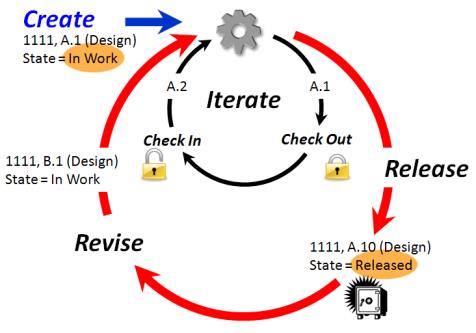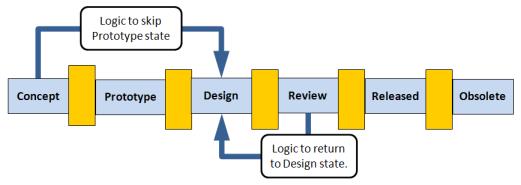Part Life Cycle History
Life cycle history is the third level of change history. A life cycle records the significant milestones that every part design passes through from the time it is conceived until it is retired from service. The life cycle state changes are highlighted in this diagram:
There are two states in this diagram:
• In Work signifies that the design of the part is underway but not finished.
• Released indicates that the design is complete and in production.
The operation that moves the part from the In Work state to the Released state is called a promotion. The criteria or rules that must be satisfied when a part passes from one state to the next is referred to as a gate. The life cycle shown above has just two states and one gate. In reality, life cycles have more than two states and each object type has a unique life cycle. You can enforce the criteria to pass through the gate manually, or use system-initiated promotions triggered by electronic workflows to automate this process.
The following illustration shows a life cycle with more states and gates, and includes conditional logic:
Promotion logic can be used to skip states or go backwards in the life cycle. In this example, the Prototype state can be skipped if the part design is very simple and no prototype is required. Also, if the reviewer rejects a part design, its life cycle can be set back from Review to Design.


